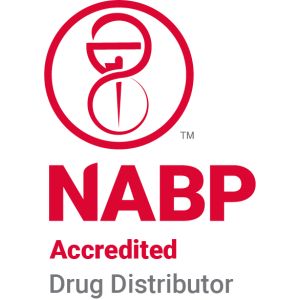Reclaim Inventory by Getting a Handle on Your Field Returns
Do you have more inventory out in the field than in your finished goods warehouse?
If you do, you’re not alone. If you’ve ever found yourself in this situation, you know it puts you in a bind. Maybe you can’t support a surgery scheduled for tomorrow or you’ve got a loaner kit missing a piece because you don’t have the right material in finished goods. Now, you either have to buy a replacement or try to get a piece back from the field, where (of course) you might have dozens.
Getting a handle on your field returns can address serious gaps in your inventory, but the process can be a headache end to end. And, if you’ve ever done field audits of your inventory, you know that there are almost as many ways of storing it as there are individual reps.
One rep might have it all laid out in his basement, meticulously cared for, all pieces accounted for. Another has it in the trunk of his car, a third stores it in his garage, and so forth. You have massive amounts of inventory out in the field, very little visibility, and a deep sense of overwhelm when it comes to considering how many thousands of pieces you’ll have to account for.
As with loaner kit inspection, field returns are a critical piece of optimal inventory management. And top-notch field audits, returns, and process management are going to help you reclaim inventory that may be underutilized. When that happens, you make it available to all of your sales reps. The results drive down your inventory costs while also helping you support clients at the highest level.
When field returns are managed to the highest standard, this is what the process looks like:
Notification
The first step in a field return is to send out a notification to all reps in the field. Typically, the notification requests the return and specifies where items should be sent.
Receipt
Then the material starts showing up. At Millstone, when we’re managing field returns on a client’s behalf, we might get six totes. For larger field returns, we might get six pallets. On the grandest scale, we might expect to receive hundreds of thousands of pieces. In some cases, we’ve seen thousands of pieces come back from one rep, who couldn’t possibly be using them to their full potential.
And when those boxes show up, they could contain an array of items: implants, instruments, guide wires, and so forth.
To put this situation in context, think of the last time you moved to a new home. Now, think of the last three boxes you packed (in haste). They were a random collection of things you threw together in your rush to get the moving guys off the clock.
That’s the kind of disarray we’re talking about that can show up in boxes of field returns.
Cataloging and Inspection
Once items have arrived, it’s time to go item by item through the boxes, cataloguing what has been received. Each piece should be inspected to determine if it is acceptable or should be rejected. When we’re managing the field return process, we make these decisions based on the criteria provided by the client.
Scrapping and Repackaging
Unusable pieces are sent to a scrap house. Good pieces are repackaged with a label. If we’re managing loaner kits for a client, we add the relevant pieces to their loaner kit pool. If not, packaged pieces are stored ready to be sent to the client or a specific field location.
After all is said and done, what’s the result? Revolutionary assessment and visibility of what pieces you have, what condition they are in, and what they can be used for—as well as availability to all of your sales reps.
Helping clients get a handle on what they have, where it is, and what condition it is in can transform how they manage (and optimize) inventory. Done right, the process removes non-revenue-generating assets from the field and helps clients (and reps) put good pieces to effective use.
Outsourcing this enormous project to the right partner can be the right choice financially, too, from the standpoint of fixed costs, storage, and capacity that distracts you from your core competencies in design and marketing.
At Millstone, we get it. We believe quality drives patient success. That’s why we’ve perfected all the capabilities medical device manufacturers need to get to market. Today we offer post-manufacturing and aftermarket services to more than 50 customers, including some of the top 10 orthopedic companies in the world. We are constantly evolving our processes and services to help OEMs achieve sustainable success. We offer clean room packaging, medical device specific warehousing, finished goods distribution, loaner kit management, advanced inspection and after-market services—all with an unparalleled focus on quality.
What could we help you do better? Learn more at https://millstonemedical.com.
Comments are closed.



